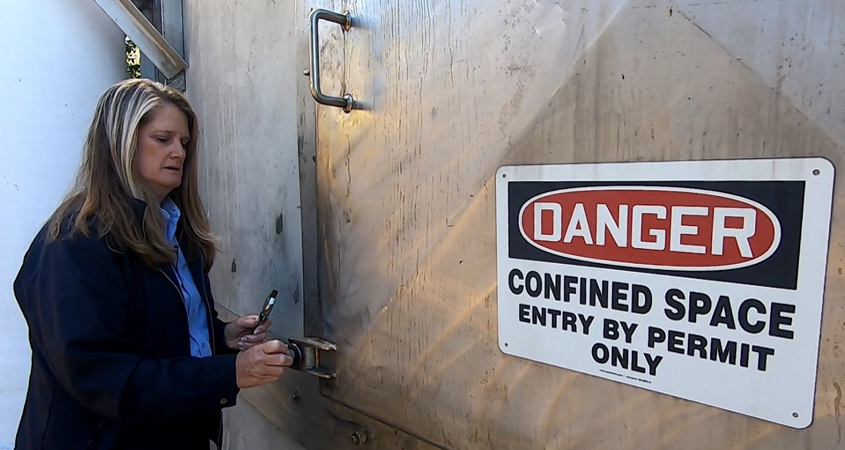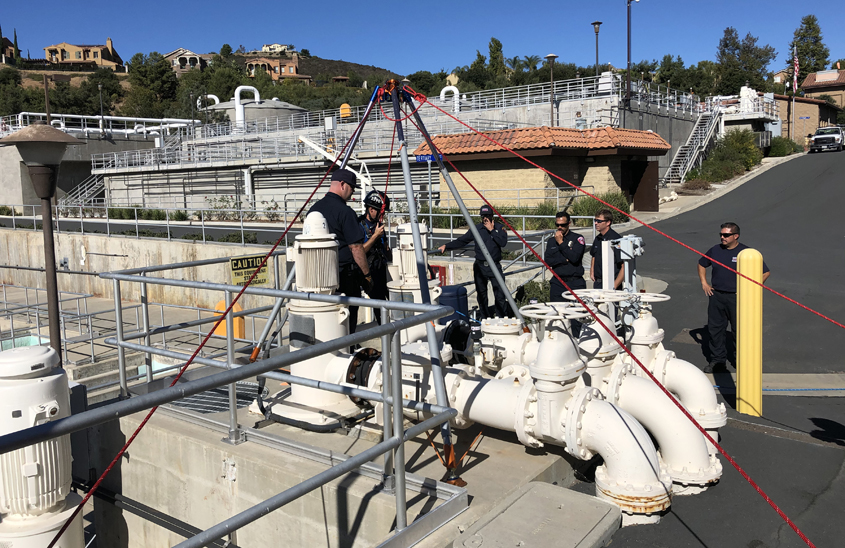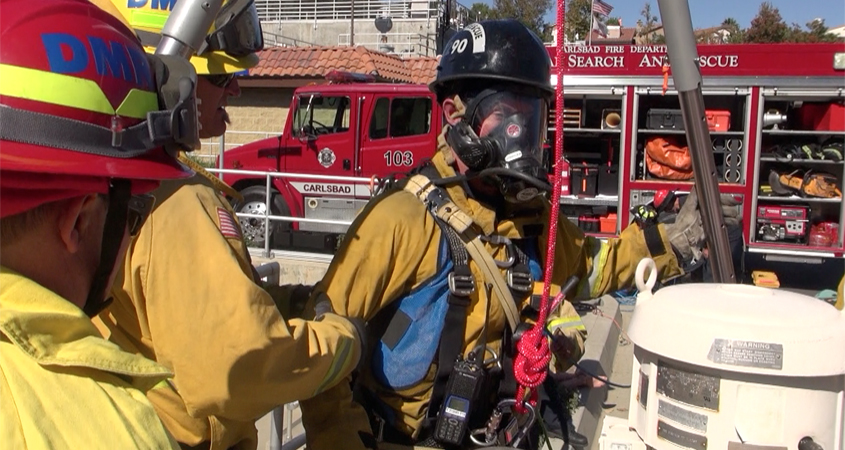One Way to Potentially Track Covid-19? Sewage Surveillance
How many people have been infected with the new coronavirus? A group of Bay Area researchers aims to find out—by tracking what’s in the local wastewater.
How many people have been infected with the new coronavirus? A group of Bay Area researchers aims to find out—by tracking what’s in the local wastewater.
American Water Works announced that its subsidiary, Illinois American Water will continue with planned infrastructure projects across its service areas amid the novel coronavirus threat. Infrastructure maintenance and upgrades at regular intervals are quite essential to ensure potable water and wastewater services to customers.
Illinois American Water provides water and wastewater services to 1.3 million people in its service territories. Per World Health Organization, washing hands with soap at regular intervals and maintaining social distancing are crucial measures to avoid the infection.
In a letter to Governors in all 50 states, territories and Washington, D.C. EPA Administrator Andrew Wheeler asked states to ensure that drinking water and wastewater employees are considered essential workers.
The toilet paper shortage is leading some people to resort to other ways of wiping and it caused a problem for part of the Redding sewer system Wednesday night.
Oceanside officially broke ground Wednesday on an innovative water recycling plant that will provide 32% of the city’s water supply in future years.
Although San Diego is working on a similar and larger project, Pure Water Oceanside will be the first operating advanced purification facility in the county.
The plan will use microfiltration, reverse osmosis and ultraviolet light to purify wastewater from the San Luis Rey Water Reclamation Facility, reducing the city’s reliance on water imported from the Colorado River and Sacramento Bay Delta.
For decades, California’s coastal aquifers have been plagued by invading seawater, turning pristine wells into salty ruins. But the state’s coastal water agencies now plan to get more aggressive in holding back the invasion by injecting millions of gallons of treated sewage and other purified wastewater deep underground. The additional groundwater will both enhance potable water supplies and help prevent saltwater from seeping further into coastal California’s massive subterranean reservoirs. A decade ago, Orange County was the first in California to successfully employ this tactic — mocked by critics as a “toilet to tap” solution.
North San Diego County fire agencies teamed up in November with the Vallecitos Water District for confined space training drills. The drills, held over a two-week period, prepare firefighting professionals to respond to emergencies in facilities such as wastewater treatment plants and maintain their confined space certification.
The recent training took place at the Vallecitos Water District’s Meadowlark Reclamation Facility. Firefighters saw how the wastewater plant operates while getting a walk through of the facility. Fire personnel worked with Vallecitos staff and both groups benefited from the opportunity to understand each other’s equipment and protocols.

Meadowlark Wastewater Plant Supervisor Dawn McDougle led the confined space training with North County firefighting agencies on behalf of the Vallecitos Water District. Photo: Vallecitos Water District
“The confined space training with the fire agencies has helped prepare us for future scenarios that could happen at the plant,” said Dawn McDougle, wastewater plant supervisor.
The Meadowlark facility was chosen because it provided both vertical and horizontal confined spaces for training drills. McDougle suggested the facility storm wet well be used for the confined space exercise since it is relatively environmentally clean.

Firefighters are briefed at the Meadowlark Reclamation Facility as part of confined space training drills conducted with the Vallecitos Water District. Photo: Vallecitos Water District
Eight different fire agencies trained during morning or afternoon sessions, breaking up groups for various skill set station drills. Stations included an “Arizona vortex,” a new piece of equipment fire agencies use for rescues; a review of confined space rescue equipment; and training in confined space permit requirements. Confined space permits are required by OSHA before making any kind of confined space entry or rescue.
Meadowlark staff reviewed the conditions and possible actions within filter station space with fire crews. Staff also explained decision-making for confined space entry, and conditions they might encounter, such as chemical exposure, and lock-out/tag-out requirements.

A firefighter prepares to access the Meadowlark Reclamation Facility as part of confined space training drills conducted with the Vallecitos Water District. Photo: Vallecitos Water District
The training wrapped up with an all-hands mock confined space drill scenario at the Meadowlark storm wet well. Participants were required to respond to a simulated mechanical failure with a station pump, leaving Vallecitos staff “trapped” in a hole. First responders needed to “rescue” Vallecitos staff. Fire department personnel used the vortex system to rescue personnel trapped in the stormwater wet well. As part of the rescue scenario, fire teams incorporated Vallecitos staff involvement in the rescue mission.
Vallecitos wastewater collection crews also completed the confined space training with the firefighters.
Fire agencies were impressed with the staff and their operation of the Meadowlark Reclamation Facility. As a result of training, fire agencies can now respond more efficiently and with confidence.
“We appreciate the collaboration with fire agencies and the time they took to explain their procedures to Vallecitos District staff,” said McDougle. “We look forward to future training with the fire agencies.”
Firefighting agencies participating in the training included crews from the cities of Carlsbad, San Marcos, Del Mar, Vista, Escondido, Oceanside, Encinitas, Solana Beach, Rancho Santa Fe, Valley Center, and crews from North County Fire (Fallbrook), San Pasqual and Rincon.
By design, the San Francisco Public Utilities Building is exceedingly green. It opened in 2012 and for years the building has been recycling its wastewater for things like flushing the toilets. Now, that water can be consumed.
“Everything that’s connected in this room to the transparent pipe is part of our research project,” explains Manisha Kothari, Project Manager for the SFPUC.
Down in the bowels of this building that houses some 900 employees, you will find the equipment that treats all of their wastewater.
In what will be the first time a public space has been powered by electricity made from poo, The Number Two Tavern is launching for a limited time in The Light, Leeds from 7th until 9th November.
The company is holding its first ever carbon week to spread the word and share knowledge about how we can all reduce our carbon footprint.
The power for The Number Two Tavern is coming from a ground-breaking process, called “anaerobic digestion,” which converts waste into biogas that can be used to generate heat and electricity. Yorkshire Water has charged a Hybrid Power battery with the poo-power, which is being created at Yorkshire Water’s Knostrop Recycling Centre.
Contamination of soil and groundwater takes a huge toll on California’s environment.
In 2017, the amount of untreated sewage and industrial waste dumped into Southern California rivers was equal to at least 500 Olympic-sized swimming pools. More than 100 million gallons of untreated sewage were dumped into the Tijuana River near Imperial Beach in September 2019.
The problem is getting worse.